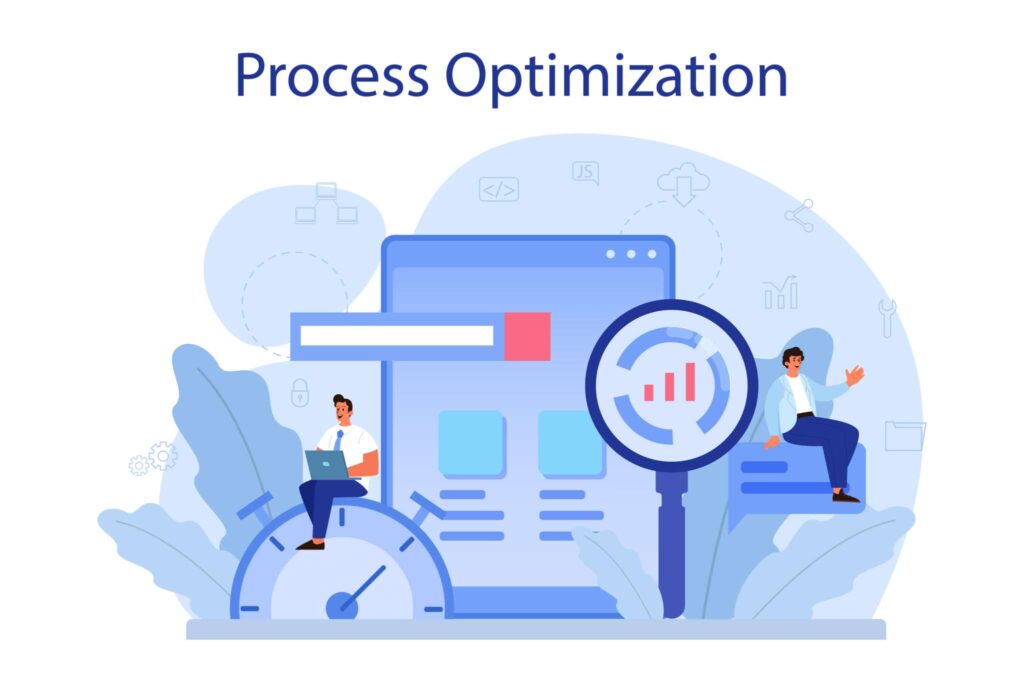As a business owner, you understand the crucial role that your Ruby on Rails web application plays in driving your online presence, engaging customers, and generating revenue. However, in today’s competitive digital landscape, delivering exceptional performance is paramount to success.
If you’re seeking ways to improve the performance of your Ruby on Rails web application and ensure a seamless user experience, you’ve come to the right place. In this comprehensive guide, we will explore actionable strategies to optimise your application’s performance and maximise its impact on your bottom line.
Throughout this article, we will delve into key areas of performance enhancement for Ruby on Rails, focusing on techniques that drive faster response times, increase scalability, and improve overall user satisfaction. We will explore approaches such as optimising database queries, implementing caching mechanisms, streamlining asset management, and leveraging code profiling for efficient development.
By implementing the strategies outlined in this guide, you’ll empower your Ruby on Rails web application to deliver a superior user experience, boost customer satisfaction, and ultimately drive business growth. If you are not sure how your application is performing and if you need to optimise it, you’re best suited to start by reading the article ‘How to validate the performance of my Ruby on Rails application.’
What actions should I take if my application is not performing well?
Even the best-designed applications can sometimes experience performance issues. Therefore, it is essential to know the next actions to be taken if the application is not performing well.

Maturity stage online service or platform. Project life cycle period. Business project implementation and development. Online tutorial, consultation, plan. Vector flat illustration
Step 1: Database indexing
One of the most crucial steps to improve the performance of an application is to optimise the database. A key aspect of this optimization is implementing efficient indexing strategies. Indexing plays a significant role in improving the performance of database queries, particularly when dealing with operations such as joining multiple tables, querying larger datasets, or executing frequent queries.
It is essential to carefully assess the indexing requirements and ensure that the appropriate indexing types are utilised. By selectively indexing the columns frequently accessed in queries, we can significantly expedite the data retrieval process.

Validating and confirming the usage of appropriate indexing types is crucial to maximising the performance gains. This involves analysing the query patterns and understanding the specific columns that are involved in the frequently executed queries. By identifying these columns and implementing the appropriate indexing mechanisms, you can ensure that the database engine efficiently retrieves the requested data, minimising the time taken for query execution.
It is important to consider using database monitoring and optimization tools like PG Hero. These tools help you analyse query patterns, identify slow-performing queries, and suggest improvements such as adding missing indexes, optimising query execution plans, or restructuring queries for better performance.
Step 2: Query optimization
One way to optimise the queries is by reducing N+1 queries. When a query fetches data for multiple records along with additional queries to retrieve related data for each record individually, it causes an increase in the number of database queries and results in slower response times. N+1 queries can be identified using Bullet gem. To address this issue, following approaches are recommended,
- Pre-load: This method involves executing two queries: one for the main object and another for the associated data. Once retrieved, the associated data is associated in memory, enabling you to access it without the need for additional database queries.
- Includes: Similar to the preload method, the includes method fetches both the main object and its associated data in two queries, most of the time. However, it will use left outer joins when you add “where” conditions on the associated object in the query.
- Eager loading: It loads all the specific associations using a join query similar to includes, except that the associated data is loaded regardless of whether it is used or not. This can be advantageous in specific situations, especially when performing calculations or filtering based on the associated data.
- Joins: It uses SQL inner join between the main object and associated object by default. If required, we can customise the query to use other types of joins. This will also be helpful when we want to customise the join conditions and select only required columns.
To learn more about when and where to use these methods, refer to this article.
In certain cases, using subqueries instead of joins can also improve query performance. Subqueries allow you to nest one query inside another, enabling you to retrieve the required data in a more optimised manner. Depending on the specific situation and data requirements, utilising subqueries can result in faster and more efficient query execution.
Step 3: Caching
Retrieving data from the database every time a request is made can introduce delays in the response time of an application. To mitigate this issue and improve performance, caching can be employed as an effective strategy. Caching involves storing frequently accessed data or static content in a temporary storage location, such as memory or disk, to expedite subsequent retrievals.
Caching is particularly advantageous when dealing with static content, such as images, videos, or documents. Instead of fetching these assets from the database or file system every time they are requested, they can be cached in memory or on a separate caching layer. This allows the application to quickly serve the content directly from the cache, reducing the time taken to retrieve and transmit the data to the user. As a result, the response time is significantly improved, enhancing the overall user experience.
In addition to static content, caching is also beneficial for frequently accessed dynamic data. Rather than retrieving the data from the database on each request, caching the data in memory or using an in-memory caching system, such as Redis or Memcached, can greatly reduce the data retrieval time. This is particularly useful for data that does not frequently change or can tolerate a certain level of staleness. By storing the data in memory, subsequent requests for the same data can be served quickly, without the need for database queries or expensive calculations.
To further optimise performance, Content Delivery Networks (CDNs) can be utilised. CDNs consist of a distributed network of servers located in various regions. They store and deliver cached copies of static assets and region-based resources. When a request is made, the CDN routes it to the nearest server, which serves the content from its cache. This minimises the distance the data needs to travel, reducing latency and improving response times. CDNs are particularly effective for global applications or websites with a wide user base distributed across different geographical locations.
Step 4: Asynchronous processing
In certain cases, not all processes within an application need to be executed immediately or within the context of a user’s request. Some processes, such as bulk operations, heavy operations, or long-running operations, can be more efficiently handled by moving them to the background. By offloading these processes to the background worker, the performance of the application can be significantly improved.
Bulk operations typically involve performing actions on a large amount of data, such as inserting, updating, or deleting multiple records simultaneously. Instead of processing these operations in real-time, they can be scheduled and executed in batches or during off-peak hours. This approach helps prevent any potential performance degradation or timeouts that could occur if the operations were performed synchronously. By running bulk operations in the background, the application can continue to respond quickly to user requests, ensuring a smooth user experience.
Similarly, heavy operations, which require significant computational resources or involve complex calculations, can be moved to the background. Examples include running complex algorithms, generating reports, or performing resource-intensive tasks. By separating these operations from the main application flow and executing them asynchronously, the responsiveness and performance of the application can be enhanced. Users can continue using the application without interruptions while the heavy operations are processed in the background.
Long-running operations, such as data imports or exports, data migrations, or large file processing, can also benefit from asynchronous processing. By initiating these operations in the background and allowing them to run independently, the application can remain responsive to user interactions. Users can continue using the application without experiencing delays or timeouts caused by the long-running processes. Asynchronous processing enables the background tasks to run parallelly, optimising the overall application performance.

Step 5: Load distribution
Load balancing is particularly beneficial in handling high traffic volumes or during peak usage periods when a single server may struggle to handle all the requests efficiently. By spreading the workload across multiple servers, the overall capacity and throughput of the system can be significantly increased, allowing for better scalability and accommodating a larger number of concurrent users.
In addition to load balancing, implementing database Read Replicas can further enhance performance and strengthen the resilience of the application. Read Replicas are additional copies of the primary database that can handle read operations. By offloading read-intensive operations to these replicas, the primary database is freed up to focus on write operations, improving overall performance. This replication mechanism ensures that the application can handle a larger number of read requests in parallel, reducing response times and improving the user experience.
Step 6: Optimise backend business logics
Optimising backend business logics involves identifying and addressing inefficient business logic, unnecessary data processing, redundant loops, and complex logics that hinder performance.
Inefficient business logic refers to code that is not optimised for speed or resource utilisation. By analysing and refactoring the logic, you can streamline the execution flow, eliminate unnecessary steps, and reduce processing overhead.
Unwanted data processing involves handling data that is not relevant to the specific operation. By identifying and eliminating unnecessary data processing steps, developers can improve performance by reducing the amount of data that needs to be processed and improving overall efficiency.
Unnecessary loops occur when code repeats operations more times than necessary. By reviewing and optimising loops, you can minimise iterations, improve code execution speed, and enhance system performance.
Inefficient complex logics refer to convoluted or overly complicated code structures that can slow down processing. Simplifying and optimising complex logics through refactoring can improve performance by reducing execution time and making the code more manageable.
Step 7: Optimise front-end components
Optimising the front-end components of a web application is crucial for improving its performance and delivering faster load times. One effective approach is asset compilation and compression. This involves combining multiple CSS and JavaScript files into a single file, reducing the number of HTTP requests required to load the page.
Additionally, compressing these files using techniques like Gzip and transferring them as mini files results in faster file transfer over the network. By compiling and compressing assets, the overall file size is minimised, leading to quicker downloads and improved page load times. This optimization technique is particularly beneficial for larger applications with extensive CSS and JavaScript files.
Step 8: Adjusting hardware capacity
If you have implemented all possible improvement measures and desire even better performance, adjusting the hardware capacity of the application becomes necessary. Performance/load testing is a crucial step in determining the maximum traffic that the application can handle within its current capacity. It is essential to test the application under various scenarios to identify any potential bottlenecks and ensure its ability to handle the expected load. This validation enables you to increase the capacity if necessary to accommodate higher traffic or heavy requests.
When modifying the resources of your application, it is important to consider both the nature of the application itself and the anticipated traffic it will encounter.
Below is a guideline on the type of resource you will need to modify based on the nature and traffic of the application.
1.
If your application is more focused on reporting and data analysis, it may benefit from allocating more memory resources. This is because reporting often involves processing and storing large amounts of data, and having sufficient memory can improve the performance of data retrieval and manipulation operations.
2.
For applications that involve complex calculations or computational tasks, allocating more CPU resources is crucial. This allows the application to handle the computational workload efficiently, ensuring faster processing and reduced response times.
3.
If your application is expected to handle a high volume of traffic, consider scaling up resources to meet the demand. This can involve allocating additional CPU, memory, and network bandwidth to ensure optimal performance and prevent bottlenecks.
4.
Applications that experience occasional traffic spikes, such as during peak hours or seasonal events, may benefit from resource allocation strategies that allow for temporary scaling. This can involve implementing auto-scaling mechanisms or using cloud-based infrastructure that allows for easy provisioning of additional resources when needed.
Step 9: Configure alerts and notifications
In order to ensure effective monitoring of your application’s uptime, it is crucial to establish a dependable monitoring tool capable of detecting and notifying you about any downtime issues. By configuring alerts and notifications, you can guarantee that the relevant team members or stakeholders are promptly informed whenever an issue arises.
This can be accomplished by setting up the monitoring tool to send alerts through various channels such as email, SMS, or integrations with collaboration platforms like Slack or Microsoft Teams. By utilising these alerting capabilities, you can take a proactive approach in addressing uptime issues and minimising potential disruptions to your application’s availability.
Furthermore, it is important to receive alerts specifically on spikes in resource utilisation so that they can be promptly addressed. By being alerted about significant fluctuations in resource utilisation, you can investigate and resolve any associated issues before they lead to adverse effects on your system’s performance or functionality.
Your next actions
Enhancing the performance of your Ruby on Rails web application is crucial for delivering a seamless user experience and achieving business success. By implementing the mentioned strategies you can significantly improve response times, scalability, and overall performance.
Investing in performance improvement measures not only ensures a satisfied user base but also strengthens your competitive edge in the digital landscape. Stay proactive, continuously monitor and optimise your application, and reap the rewards of a high-performing Ruby on Rails web application.
Next, we recommend engaging with your in-house team, if available, to implement these measures aimed at improving your application’s performance. Collaborating with your internal team can leverage their expertise and ensure smooth execution. However, if you don’t have an in-house team or require additional support, it may be the right time to explore the possibility of partnering with an external team. Outsourcing certain aspects of your project can provide specialised skills and resources to optimise your application’s performance effectively.
Furthermore, we strongly recommend you to explore the insightful article titled How Can I Validate the Architecture of My Ruby on Rails Project? This resource offers valuable guidance on ensuring the solidity and efficacy of your Ruby on Rails project’s architecture. It covers a wide range of approaches, best practices, and tools that can be utilised to validate the architecture, identify potential issues, and make informed decisions for enhancement.
Should you require consultation or assistance in optimising your application’s performance or validating and improving its architecture, please don’t hesitate to get in touch with us. We would be delighted to offer our expertise and support to help you achieve optimal performance and ensure the success of your application.
Author
Surender
Surender is a seasoned technical lead at Mallow, bringing with him a wealth of experience in the field of project development spanning multiple domains. With a remarkable track record of successfully delivering projects and satisfying clients across the globe, Surender has established himself as a reliable and innovative professional. Throughout his career, Surender has honed his skills in various aspects of project management, software architecture, and technical leadership. Beyond his professional accomplishments, Surender finds immense joy in his role as a father. He embraces the journey of learning to become a father. His dedication to learning and personal growth extends beyond his career, as he continuously seeks new knowledge and skills to enhance his abilities as a technical leader.



